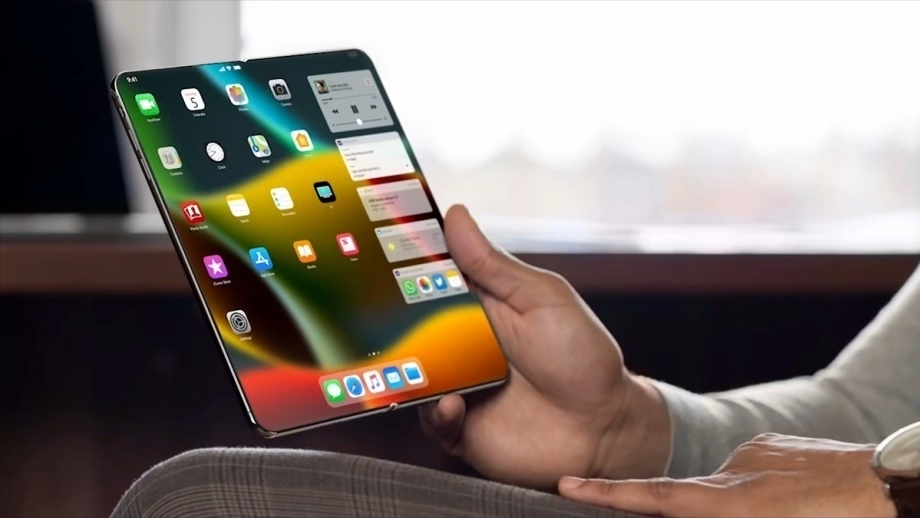According to the latest buzz circulating in the tech world, Apple's highly anticipated foldable iPhone, often referred to as the "iPhone Fold," is poised to feature an innovative hybrid frame crafted from both titanium and aluminum. This isn't just another casual rumor; it's a significant development, hinting at how Apple intends to tackle the intricate balance of durability, weight, and premium feel in its entry into the competitive foldable smartphone market.
The Latest Buzz: Hybrid Frame Emerges
Notably, this insight comes from an analyst note by Jeff Pu of Haitong International Securities, a report that's been making rounds through outlets like 9to5Mac and AppleInsider. While the details provided in Pu's note were somewhat lean on specifics, the core message is clear: expect a blend of these two distinct metals. This isn't entirely new territory, as previous whispers have alluded to a multi-material approach, but Pu's latest reiteration certainly lends more weight to the idea.
The implications are pretty huge, aren't they? Apple, notorious for its meticulous material science and industrial design, appears to be making a calculated choice. They're not just picking one metal; they're strategically combining them. This suggests a nuanced engineering decision aimed at achieving very specific performance and aesthetic goals for a device that, rumor has it, might resemble two ultra-thin iPhone Air models fused by a hinge.
Why a Hybrid Frame? Balancing Strength and Scale
So, why titanium and aluminum together? It's all about strategic engineering, really. Titanium, as we've seen with the iPhone 15 Pro models, offers incredible strength-to-weight ratio and scratch resistance, giving devices a premium, robust feel. It's fantastic for durability, especially in critical areas that might experience more stress, like around a hinge mechanism, which is a common Achilles' heel for foldables.
However, titanium is also heavier and more expensive than aluminum. This is where aluminum comes into play. It's lighter, more pliable, and generally more cost-effective to produce at scale. By integrating aluminum in less stressed areas or for the overall body structure, Apple could significantly shave off overall device weight. Think about it: a foldable device, by its very nature, already carries more complexity and potential bulk than a standard slab phone. Reducing its heft is crucial for user comfort and pocketability.
This hybrid approach contrasts quite sharply with some competitors, such as Samsung's Galaxy Z Fold 6, which has leaned into an all-titanium frame for its premium variant. While strong, an all-titanium design can add considerable mass. Apple's rumored strategy aims to hit a sweet spot, potentially delivering a device that feels premium and durable, yet doesn't become an unwieldy brick in your pocket. It's a clever compromise that could differentiate Apple's offering in a crowded market.
The Bigger Picture: Apple's Foldable Ambitions
This frame material rumor fits neatly into the broader narrative surrounding Apple's entry into the foldable space. The company has been notoriously cautious, taking its time to perfect new product categories. Reports suggest internal testing of foldable prototypes has been underway, with a potential launch window now frequently cited as 2026. This patient approach allows Apple to observe and learn from the challenges faced by early foldable adopters, particularly concerning display durability and hinge longevity.
An optimized frame material is fundamental to overcoming these hurdles. A stronger, yet lighter, chassis could better protect the delicate foldable OLED display (rumored to be around 7.9-8.3 inches internally with a 6.6-inch external screen). It also plays a vital role in ensuring the device maintains its structural integrity through thousands of folds and unfolds. The choice of materials isn't just about aesthetics; it's a core component of Apple's strategy to deliver a refined and reliable foldable experience from day one. And frankly, they need to nail it, given the high expectations.
Industry and User Sentiment: Cautious Optimism
Analysts, while acknowledging the plausibility of a hybrid frame for cost and weight balance, also express caution. Production challenges for foldable devices are significant, and Apple's perfectionism could certainly lead to delays. The underlying sentiment is one of "prove it." After all, Apple has remained conspicuously silent on all foldable rumors, maintaining its standard policy of not commenting on unreleased products. This makes every scrap of information, even an analyst's brief note, feel like gold for those eagerly awaiting an "iPhone Fold."
What's Next for the iPhone Fold?
The latest rumors about a hybrid titanium and aluminum frame for the iPhone Fold underscore Apple's intent to engineer a foldable device that stands out in terms of build quality and user experience. It's a pragmatic engineering decision, balancing the desires for robustness and a lightweight design. While official confirmation remains elusive – Apple will only speak when it's good and ready, you know – these leaks offer tantalizing clues into the potential direction of their highly anticipated foldable.
As we move closer to the projected 2026 launch window, we can expect more details to trickle out from the supply chain. What remains to be seen is how Apple will truly innovate beyond just materials, perhaps with unique software integrations or hinge mechanics that truly redefine the foldable category. The frame, though, that's just the foundation. A strong foundation.
